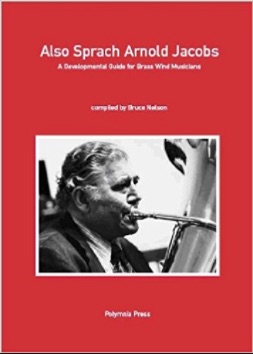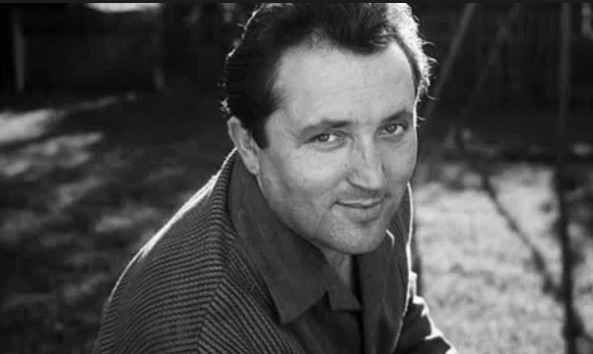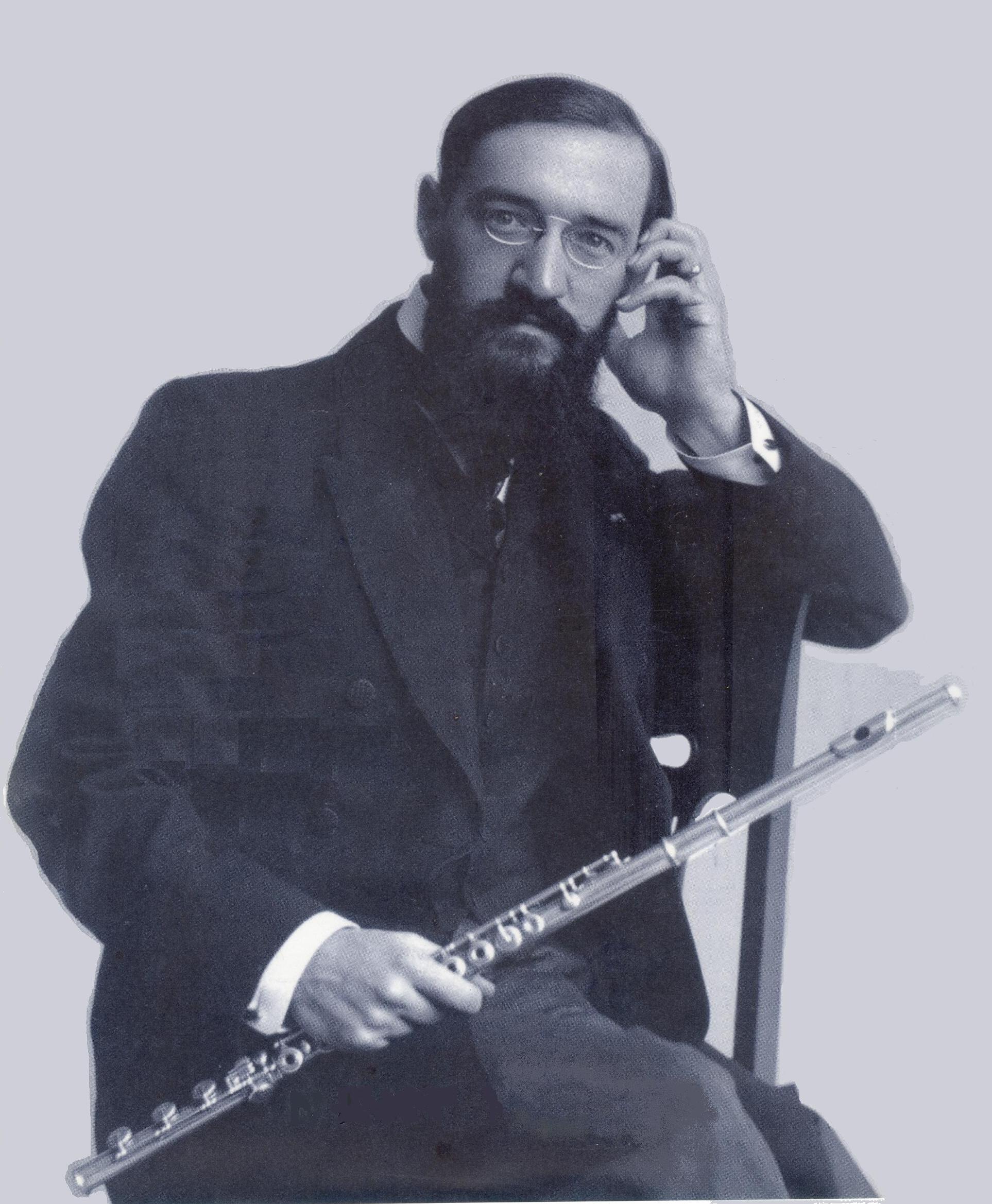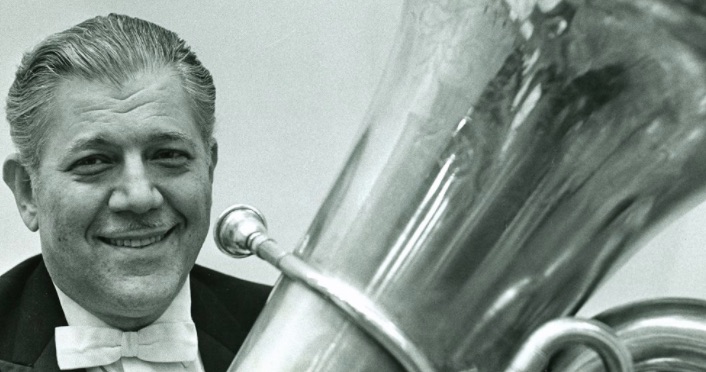During my teenage years, many of my musical friends and mentors were brass players. As a result, I received quite the schooling on the glories of the Chicago Symphony Orchestra brass section. When I moved to Chicago in 2010, this education returned to the forefront of my thinking.
Walking near Symphony Center one day, I saw a book—Also Sprach Arnold Jacobs—on display in the window of a music store. An iconic figure in the history of the CSO, Arnold Jacobs (1915-1998) played principal tuba with the orchestra from 1944 to 1988. He is also a famed pedagogue whose influence extends well beyond the scope of playing the tuba and other brass instruments.
I eagerly purchased a copy of the book and began reading about Jacobs’s ideas. One prominent principle was the importance of “the song in the brain”—the notion that the player must develop a strong inner hearing of musical artistry and let that mental conception direct the playing of the instrument. Put another way, “The conceived imitation of great playing will control the body for you” (14).



When I began to explore the idea of the song in the brain in my own playing, I consciously chose to prioritize expression. Listening to great singers such as Ian Bostridge and Fritz Wunderlich, I became a student, so to speak, of the intense and subtle emotions their voices convey, and practiced lieder alongside recorded performances. After some time, I started to direct more of my attention to tone quality. In this realm, I looked to recordings of Marcel Moyse and Georges Barrère, and when playing, I envisioned the vibrant, supple sounds of these French masters of the flute. All along the way, I considered my central project to be learning to recall and imagine details of expression and tone quality in increasing degrees of clarity.
A substantial amount of time passed, and I began learning a flute solo in which I faced several challenges of tuning. I set a tuner on my music stand, took notes on my intonation tendencies, and started a process of applying various physical adjustments, such as changes in embouchure, air, and shape of the oral cavity, to correct my pitch. I sensed that something felt “off” about this practice strategy, and I soon realized that I was working in a manner that was at odds with Jacobs’s song in the brain principle.
When Jacobs speaks of playing from an inner concept of song, this aural image is all-encompassing. One is imagining expression and tone quality, as well as details of vibrato, articulation, dynamics, tuning, and well, this list can go on and on. And, to review, this internal impetus provides the guide for the musician as he or she engages in playing the instrument. As I once heard in brief terms—the mind leads, the body follows.
By exploring this approach with an emphasis in the areas of expression and tone quality, I came to understand that developing an inner imagination of sound, both away from and at the instrument, enables me to play in a more actively creative manner. This realization made it possible for me to notice that when working on tuning, I behaved more reactively. For instance, I mentally gave myself verbal instructions to bring my pitch down when working in front of a tuner and playing a pitch on which I tended to be sharp. However, my practice time did not include any sort of ear-training study that would cultivate an ability to pre-hear that pitch in tune.
Recognizing that through Jacobs’s teachings, I was enjoying an enhanced sense of personal creativity, I was now eager to take the time to build my inner hearing of pitch. One strategy I used for my solo involved recording myself slowly playing the piece on a decent-sounding electronic keyboard. An electronic keyboard has stable tuning, after all. Then, during practice, I would listen to these recordings while simultaneously studying the score. Over time, my inner hearing of the pitches of the piece steadily improved, as did my intonation when I played the music on the flute.
To take matters a step further, I analyzed the individual phrases of the solo in order to identify their skeletal, or primary foundational pitches. I would then listen to myself play these skeletal pitches on the keyboard, both in the order they occur in the music and also rearranged in all ascending or all descending order. Through this study, I refined my ability to pre-hear the various intervals (major third, minor third, etc.) expressed within the piece. And, as with my listen-to-recording/study-score strategy, I observed that when I let myself step away from the keyboard and play the skeletal pitches on the flute, both in musical order and in other permutations, my intonation was gradually improving.
Working with the teachings of Arnold Jacobs has taught me that the more I am able to shape my inner hearing, the more I am able to play music in that way. With this understanding, I have experienced a greater sense of creativity and self-expression as I play. I also regularly devote time to developing my ability to imagine sound in finer degrees of detail.
Hearing a note taper away just as imagined has been exciting. Equally gratifying is noticing an unintentional change in pulse during a moment of heightened emotion. Building a comprehensive inner concept of musical artistry is certainly the challenge. I find the words of Jacobs helpful here, too. “You are a product of the challenges you overcome” (13).

Nelson, Bruce, comp. Also Sprach Arnold Jacobs: A Developmental Guide for Brass Wind Musicians. Mindelheim, Ger.: Polymnia Press, 2006.
[…] For Arnold Jacobs, it means singing in your head while playing. […]